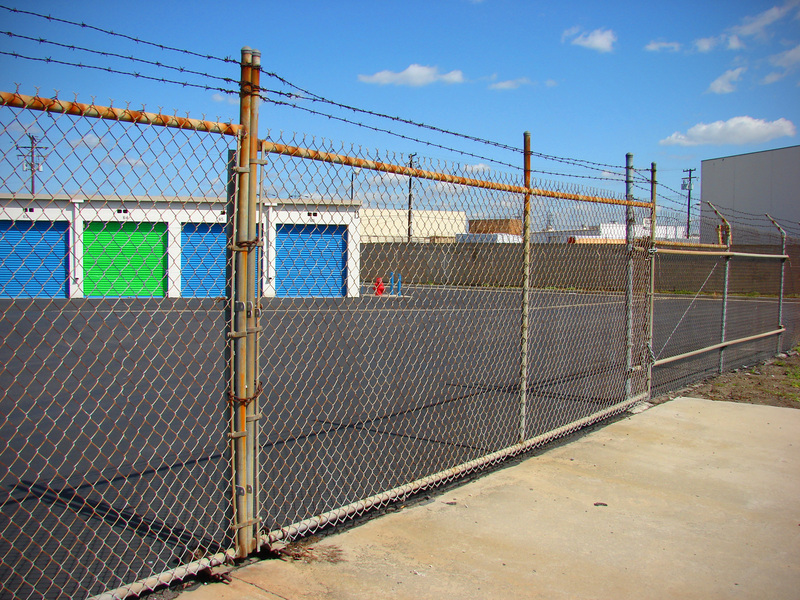Conquer Moving Day with a Crystal-Clear Pre-Move Checklist
Posted on 10/06/2025
Conquer Moving Day with a Crystal-Clear Pre-Move Checklist
Moving day can be one of the most stressful events in life, but with a crystal-clear pre-move checklist, you can streamline the process, avoid common pitfalls, and ensure a smooth transition into your new home. Whether you're moving across town or to another state, planning is essential. In this comprehensive guide, you'll discover a pre-move checklist that will empower you to conquer moving day with confidence, organization, and minimal stress.

Why You Need a Pre-Move Checklist for a Successful Relocation
Relocating is more than just packing boxes; it involves a myriad of tasks-- from organizing utilities to notifying important contacts. A pre-move checklist ensures that no crucial step is overlooked. Here's why a comprehensive moving checklist is indispensable:
- Staying Organized: Breaks down the moving process into manageable steps.
- Saving Time: Allows you to prioritize and delegate tasks efficiently.
- Reducing Stress: Removes guesswork, so you can tackle each task with clarity.
- Minimizing Mistakes: Avoids missing essential deadlines or forgetting important items.
- Ensuring Nothing is Left Behind: Keeps track of what needs to be accomplished before moving day arrives.
The Ultimate Crystal-Clear Pre-Move Checklist
Below is a step-by-step guide to conquering moving day using a thorough and easy-to-follow pre-move checklist. By following these actionable tips, you'll create a seamless moving experience from start to finish.
8 Weeks Before Moving Day: Laying the Groundwork
- Sort and Declutter: Go through each room and decide which items to keep, sell, donate, or discard. Getting rid of unnecessary possessions can dramatically reduce your moving load and simplify packing.
- Research Moving Companies: Collect quotes, read online reviews, and book a reputable moving company or rental truck early. Secure your moving date, especially during peak moving seasons.
- Start Budgeting: Create a moving budget, accounting for all expenses such as moving supplies, professional services, and travel costs.
- Collect Important Documents: Gather medical records, school transcripts, financial papers, and other essential documents. Keep them in a separate, easily accessible file.
6 Weeks Before Moving: Logistics and Supplies
- Order Packing Supplies: Gather boxes, packing tape, bubble wrap, markers, and specialty containers for fragile or valuable items.
- Take Measurements: Measure large furniture and doorways in your new home to ensure everything will fit. This step can prevent last-minute moving day headaches.
- Arrange Storage (If Needed): Reserve a storage unit if you have items that won't move with you right away.
- Notify Schools: If you have children, arrange enrollment at their new school and notify their current school of the move.
4 Weeks Before Moving: Preparing Your Home
- Begin Packing Non-Essentials: Start with items you use rarely, such as out-of-season clothing and decor.
- Label Everything: Mark each box with the room it belongs to and a brief description of contents. Color-coding boxes can further streamline the unpacking process.
- Host a Moving Sale: Sell unwanted objects online or organize a garage sale to lighten your load and earn extra cash.
- File Change of Address: Notify the post office, banks, credit card companies, insurance providers, and other important contacts of your new address.
2 Weeks Before Moving: Finalize Arrangements
- Confirm Moving Date: Reconfirm arrangements with your moving company or truck rental service.
- Schedule Utilities: Arrange for disconnection and activation of water, electricity, gas, and internet services at both your old and new home.
- Pack Valuables Separately: Set aside key items--such as jewelry, legal documents, and sentimental keepsakes--to carry with you on moving day.
- Take Care of Pets: Arrange for pet transportation or boarding, and update their microchip and tag information.
1 Week Before Moving: Last-Minute Prep
- Clean Your Home: Deep clean each room as you finish packing. This will help you spot any items left behind and ensure you leave your old home in good condition.
- Defrost Freezer and Clean Appliances: Unplug and clean your fridge and freezer at least 24 hours before moving to avoid leaks and odors.
- Prepare an Essentials Box: Pack a box with toiletries, snacks, medications, a change of clothes, chargers, and important documents you'll need immediate access to on moving day.
- Check Parking and Elevator Access: Reserve parking spots or elevators at both locations if necessary to ensure a smooth process for the moving truck.
Moving Day: Execute with Confidence
- Do a Final Walkthrough: Ensure all rooms, closets, and storage spaces are empty. Don't forget to check the attic, basement, and garage.
- Supervise the Movers: Be on-site to direct the movers and answer any questions. Reference your master checklist to ensure nothing is overlooked.
- Hand Over Keys: Provide keys to the new residents or property manager as required.
- Double-Check Utilities: Confirm that all utilities are turned off at your old home and on at your new place.
Expert Tips to Perfect Your Moving Day Checklist
As you work through your step-by-step pre-move checklist, consider these expert strategies to further simplify your move:
- Photograph Electronics: Before packing up TVs and computers, take pictures of cable configurations for easier reassembly in your new home.
- Use Clear Storage Bins: Store vital items and hardware in transparent bins for quick identification during your first days in your new place.
- Protect Fragile Items: Use towels, blankets, and clothing as padding to save space and minimize damage risk.
- Pack an Overnight Bag: Assume you may be too tired to unpack everything right away--have pajamas, a toothbrush, and basic essentials ready.
- Communicate Clearly: Label boxes "Load Last" for immediate essentials and "Fragile" for breakable items; ensure your movers understand your priorities.
Common Pitfalls to Avoid When Creating a Moving Day Checklist
Even with a comprehensive moving checklist, certain oversights can derail your moving plans. Watch out for these common mistakes:
- Underestimating Packing Time: Packing usually takes longer than expected. Start early and be consistent to make moving day manageable.
- Forgetting to Notify Important Parties: Missed address changes can disrupt mail delivery and service transfers--keep a running list of places to update.
- Neglecting to Measure Furniture: Double-check each item's dimensions to avoid moving something that won't fit in your new home.
- Poor Box Labeling: Vague or missing labels lead to chaos during unpacking. Be as descriptive as possible for every box.
- Overpacking Boxes: Heavier boxes are harder to move and more likely to break. Stick to the rule: if it's too heavy, split it up.
How to Personalize Your Pre-Move Checklist
Every move is unique--tailoring your crystal-clear pre-move checklist ensures relevance to your household's specific needs. Here's how to adapt the template:
- Consider Family Members: Account for small children, elderly family members, or those with special needs. Plan age-appropriate ways to get them involved or arrange trusted care during the move.
- Think About Your Location: City dwellers may need parking permits or elevator reservations, while suburban moves may involve lawn equipment or outdoor furniture considerations.
- Factor in Your Timeline: International moves or cross-country relocations often require additional paperwork, shipping logistics, and longer timeframes.
- Include Special Items: Instruments, collectibles, or valuable artwork may need professional packing or special insurance coverage.
- Pets and Plants: Plan for safe transport, breaks, and legal regulations if crossing state or country borders.
Making Moving Day a Breeze with a Detailed Checklist
Harnessing the power of a systematic, crystal-clear moving checklist gives you an edge in conquering moving day. Here's a recap of how a thorough approach transforms your experience:
- Reduces last-minute surprises by offering structure and accountability.
- Streamlines communication between family members and movers.
- Minimizes costly mistakes and forgotten items.
- Enables a faster, less stressful transition into your new home.
Moving is a major life event, but with patience and planning, it doesn't have to be overwhelming. Treat your move-in checklist as your roadmap to success, adapting it to fit your unique situation. Share copies with family members, roommates, or anyone else involved, and keep a digital version on your phone for reference.
Free Printable Pre-Move Checklist Template
To make things even easier, here's a sample pre-move checklist template you can customize for your own move:
-
Two Months Before Moving Day:
- Declutter home and donate/sell items
- Research and book moving company or rental truck
- Begin budgeting for the move
-
One Month Before Moving Day:
- Order boxes and packing supplies
- Start packing rarely used items
- Notify medical offices, schools, and service providers
-
Two Weeks Before Moving Day:
- Change mailing address with USPS
- Confirm move date with movers
- Update utilities and transfer services
-
One Week Before Moving:
- Pack essentials and valuable items
- Clean home and appliances
- Prepare a travel bag with day-of essentials
-
Moving Day:
- Do a final walkthrough
- Direct movers and manage logistics
- Leave keys and paperwork as needed
For a printable PDF of this move-out checklist, search online for customizable templates that match your household size and moving situation.

Frequently Asked Questions About Pre-Move Planning
What is the most important step on a moving day checklist?
The most crucial step is conducting a final walkthrough of your old home to make sure nothing is left behind, all utilities are shut off, and all keys and documents are handed over as needed.
When should you start preparing your moving checklist?
Ideally, begin assembling your moving checklist 6-8 weeks before your move. This gives you adequate time to plan, sort, pack, and coordinate services.
How can I make my move less stressful?
Start early, use a crystal-clear pre-move checklist, and consider hiring professionals for packing, moving, or cleaning. Delegating and not leaving anything to the last minute are key for minimizing moving stress.
Conquer Your Next Move With Confidence
Moving to a new home symbolizes new beginnings, but it doesn't have to be a logistical nightmare. With a crystal-clear pre-move checklist, you'll maintain control from the planning phase right up until you're comfortably settled. Take the time to personalize your moving day checklist, involve family and friends, and refer back to this guide whenever you need direction.
Conquer moving day with preparation, clear communication, and confidence. Happy moving!
